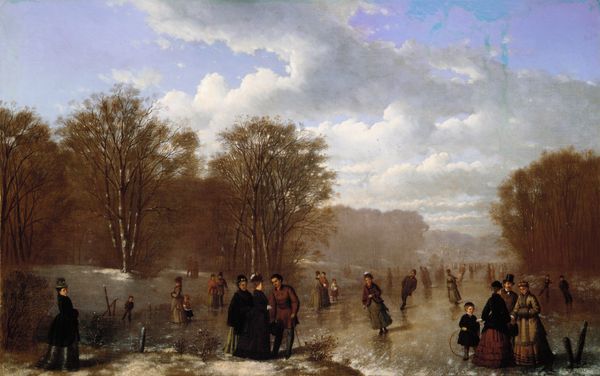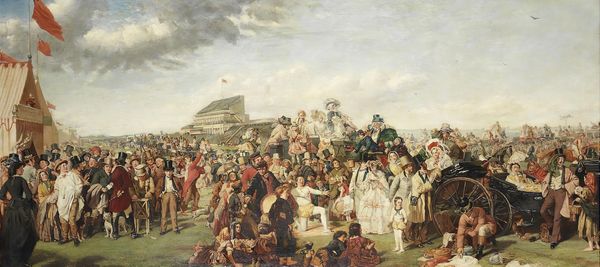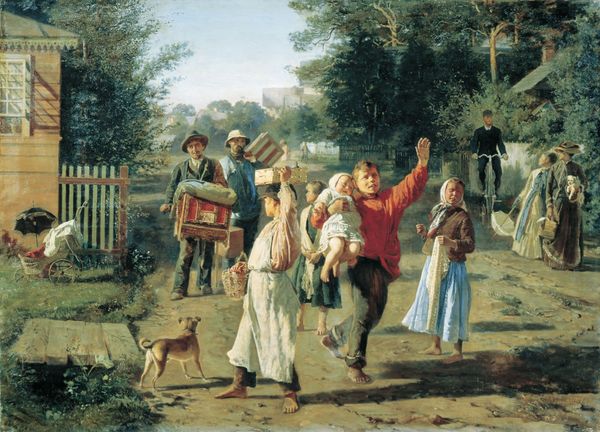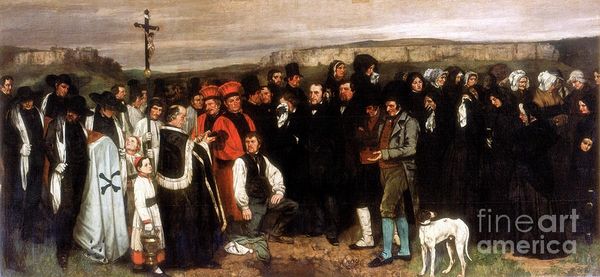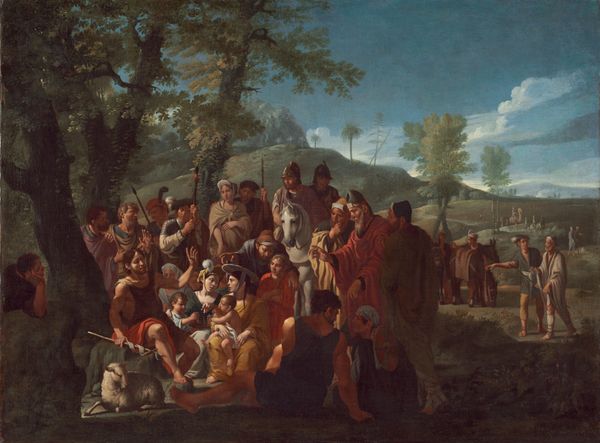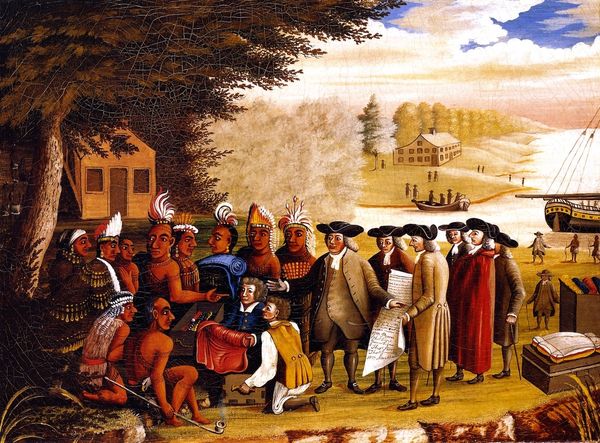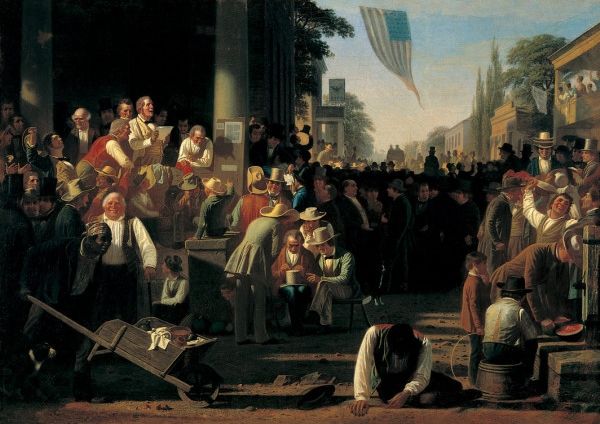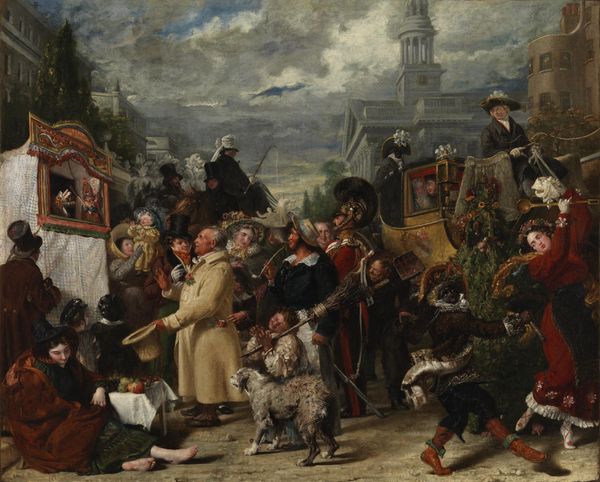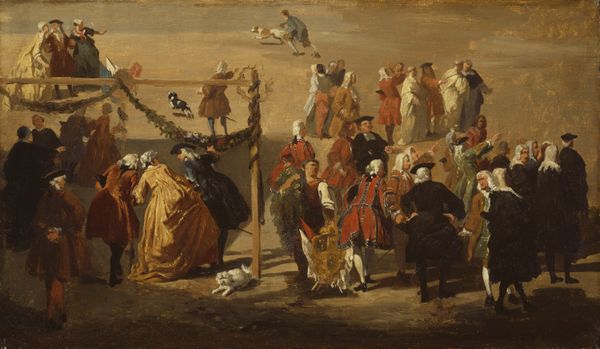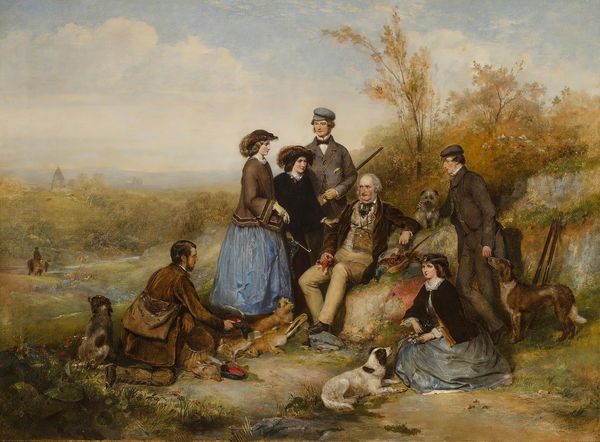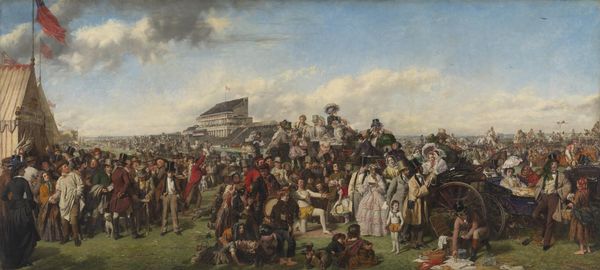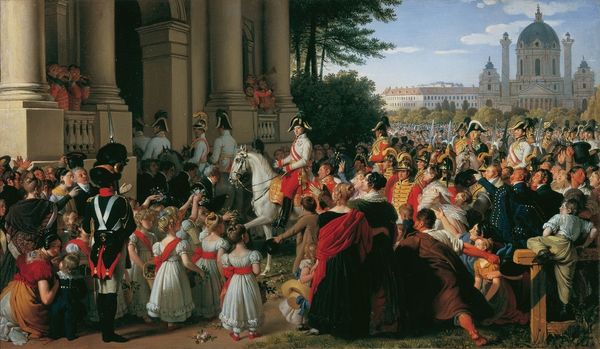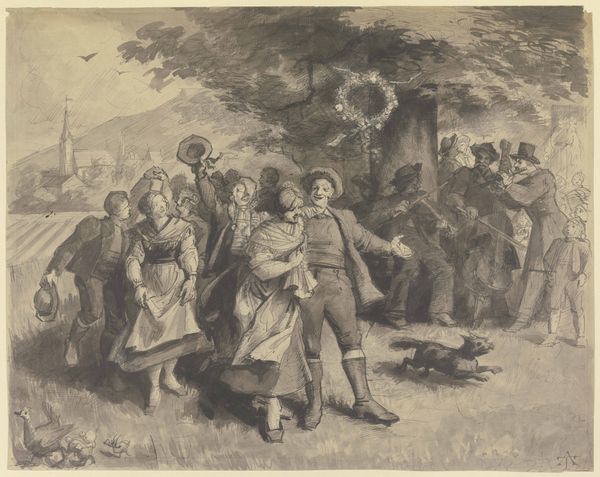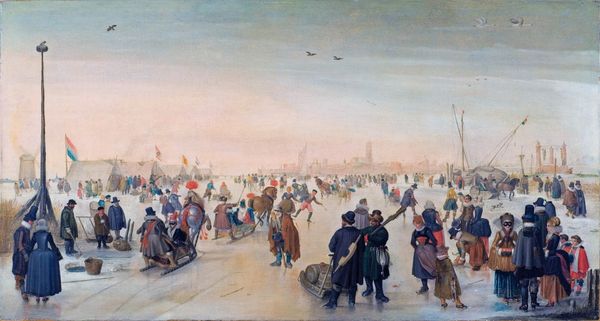
Promenading on the Ramparts of Copenhagen on the Evening of a Public Holiday in Spring 1862
0:00
0:00
Dimensions: 118 cm (height) x 165 cm (width) (Netto), 136 cm (height) x 183.2 cm (width) x 8.1 cm (depth) (Brutto)
Curator: Andreas Herman Hunæus painted "Promenading on the Ramparts of Copenhagen on the Evening of a Public Holiday in Spring" in 1862 using oil on canvas. Editor: It has a charmingly sedate air. A well-dressed crowd ambles in front of stark trees, with orderly homes in the background; there's such a strong sense of composed civic life on display. Curator: Indeed. Hunæus presents a slice of Copenhagen society at leisure. It's worth considering how art in that period often served to reflect and reinforce social hierarchies and national identity. Who was invited to partake in the public sphere? Whose story is deemed worth depicting? Editor: Looking at it through that lens, the painting reads very differently. The seemingly casual promenade starts to feel like a deliberate construction—a visual manifestation of power. There are those enjoying public space as opposed to, say, those confined to working. It makes one question accessibility. Curator: Exactly. Consider that these public holidays, though ostensibly for everyone, often reinforced the visibility and privilege of the middle and upper classes. It’s no accident that everyone here looks relatively prosperous. The carefully rendered details of clothing—the top hats, the shawls— speak volumes about social standing. Editor: And how gender also plays a huge part; while women are depicted, their roles are decidedly circumscribed. Notice the body language; the men often lead and gesture while women mainly accompany. Curator: Certainly. Also, beyond social and gender dynamics, we can analyze the setting itself. Why were the ramparts—historically defensive structures—transformed into spaces for leisurely promenades? This shift signals a moment of relative peace and urban development. What might this space then reveal about civic responsibility or access? Editor: What begins as a quaint genre scene reveals these compelling questions when one begins to critically dissect. The public space can become a platform that enables this social theatre of leisure. Curator: Yes. Ultimately, Hunæus gives us a glimpse into a very particular moment in Copenhagen’s history, laden with social and political meanings embedded in its apparent simplicity. Editor: And perhaps in considering those embedded power structures, we're challenged to envision ways to democratize public spaces more intentionally today.
Comments
No comments
Be the first to comment and join the conversation on the ultimate creative platform.
